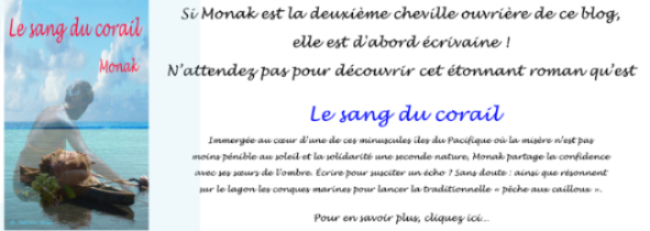Black gold of
Polynesian islands
In gastronomy as in cosmetics, the fragrance of Tahiti
vanilla is considered an ultimate. But what is vanilla, and where did it come
from?
Vanilla is an orchid native from
Mexico. The Totonacs, first discovered the fruit of this orchidaceae and vowed a worship to it for centuries.
 |
| The beautiful and delicate flower of the vanilla plant |
The Aztecs, them, used it, as "Tlilxochtil",
for flavoring their chocolate.
Short History of Vanilla tahitensis
Imported into Spain by the
conquistadors, it despairs the botanists of the time. Deprived of its fertilizing
agent, the Melipona bee which exists only in Mexico, vanilla was barren. In
1841, an artificial insemination technique is worked out to fertilize and
produce finally these famous pods.
 |
| Mountainside vanilla plants |
Vanilla tahitensis was introduced in Polynesia by Admiral Hamelin in 1848.
Long regarded as a crossbreeding
between Vanilla planifolia and Vanilla pompona, it would be in fact a
subspecies of Vanilla planifolia,
variety recognized as the most fragrant and most fruity.
Specificity of the Vanilla planifolia
This is the genus the most
cultivated in Polynesia. Unlike the fragrans
species, this vanilla is indehiscent when it grows in the Polynesian climate,
namely, it does not open at maturity: it remains fleshy.
So the Polynesians can pick it
when it is at the peak of its flavor and aroma. The "ordinary"
vanilla, dehiscent, explodes at maturity. We must pluck it before it is ripe,
depriving ourselves of the best of its qualities.
In Polynesia, the plantations
are found at Huahine, Raiatea and especially at Taha'a that produces plants
with renowned aroma.
A single molecule
"Tahiti" Vanilla is
distinguished from other vanillas by its unique aromas. It contains
heliotropin, very heady perfume. The para-hydroxybenzoic acid is also found in
a very high proportion. Vanillin is, unlike, in much smaller quantities.
Interest in Tahitian vanilla
has redoubled when researchers discovered in its pods, ethyl vanillin.
This molecule has a flavor
intensity which is three to four times greater than that of vanillin. It was
previously an exclusively artificial flavor. Its discovery in nature was a
small revolution.
The vanilla plant
The Polynesian vanilla plants belong
to two different species: Vanilla tahitensis,
grown almost exclusively in the Western Society Islands, and Vanilla fragrans located among a best
weather in the Austral Islands.
 |
| A vanilla plant in its natural environment |
It is a shade plant. It
thrives in the valleys and moist places sheltered from the wind enjoying a
moderate sunlight. She needs a prop on which to cling to grow and develop.
A climbing orchid with thick,
elongated leaves, it wraps around a support like a tree. Adventitious roots
develop on the stem and fix the plant on its stake. Its flowers are small and
white.
The marriage of vanilla
Vanilla is naturally sterile.
A slave of Réunion Island, Edmond Albius, managed to artificially fertilize it
in 1861.
Without the Melipona bee, its
natural pollinator, fertilization should be done by the human hand. We call
this process the marriage. It is practiced in the morning between 6 and 11:00
a.m., the corolla opening up only at those hours.
 |
| The flower of vanilla just before insemination |
The stamen has an anther with two bags containing a mass
of agglomerated pollen grains, the pollinium.
Pollen is separated from the stigma on which it is to germinate, by a little
stem.
The vanilla wedding comprises
obtaining the pollinium to settle it on the stigma of the flower, for allowing
the pollen to germinate and fertilize the ovules.
The fruit, vanilla bean, grows
to reach fifteen to twenty centimeters.
The harvest
Nine months after the wedding,
the pod becomes pale green, then yellow and finally brown at its end: it's time
to harvest.
 |
| Vanilla Pods in bulk at the start of the drying period. |
The pods are put for five days
in the dark where they become uniformly brown. Then they are deposited in a
drying rack during three months. They then lose three quarters of their water
and turn brown without drying out. During drying, the flavor develops.
 |
| In the sunshine, drying vanilla beans |
They can then be marketed. As
with wine, there are good and bad years and good and bad regions for vanilla.
The production
In the fifties, Polynesia was the second largest
producer of vanilla with two hundred tons, behind Madagascar. Since then,
production has continued to decline until to collapse in 1970 with a few
hundred kilos.
 |
| Vanilla bean, black gold of Taha'a |
Today, Polynesia no longer
produced annually as seven to fifteen tons of vanilla against more than a
thousand in Madagascar.
The Polynesians have begun to
resume production of this unique product, work is starting to bear fruits.
The uses
In cosmetics, the Tahitian
vanilla bean is used in many products for its richness in polyphenols with
anti-radical and cell protective actions.
 |
| Vanilla beans, gourmets' delight, at the shop stalls |
It also enters the composition
of many perfume products.
And, of course, it is used in
a variety of cooking recipes worldwide.
An article
of Julien Gué
Translated from French by Monak
Copyright
Julien Gué and Monak. Ask for the authors’ agreement before any reproduction of the
text or the images on Internet or traditional press.



Aucun commentaire :
Enregistrer un commentaire
Cet article vous a fait réagir ? Partagez vos réactions ici :